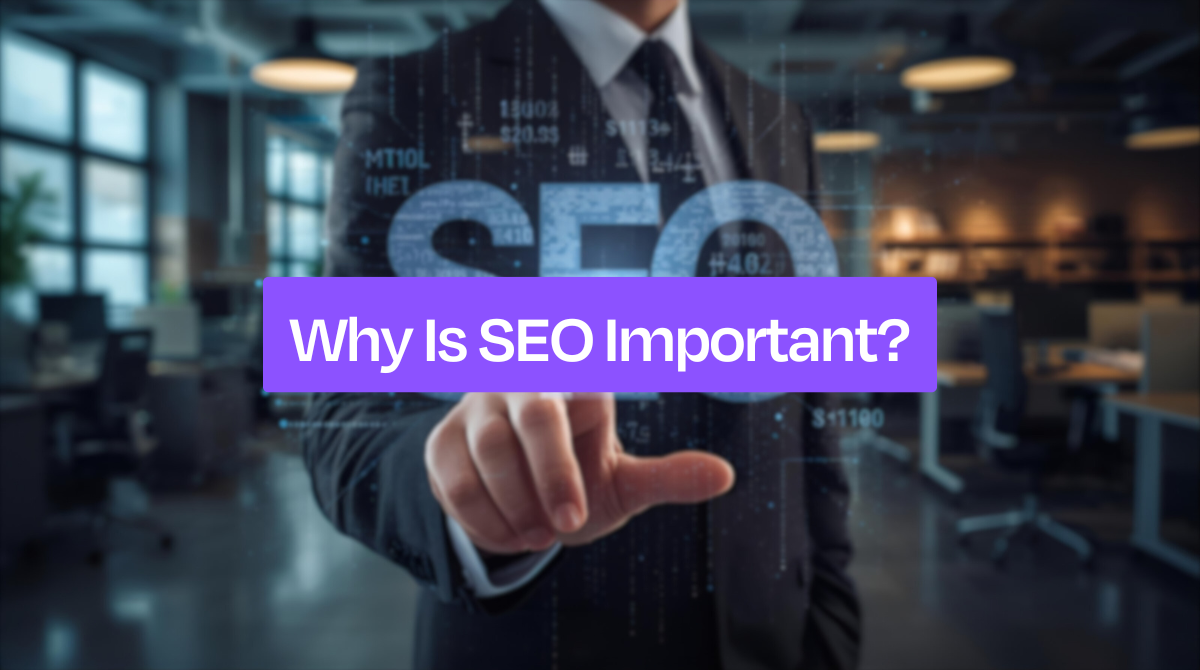SEO generates 51% of all website traffic and 40% of business revenue, making it the highest-performing digital marketing channel available.
Google's #1 organic position captures 27.6% of all clicks, while position #2 receives only 18.7%. That 8.9% difference translates directly into lost customers and revenue for lower-ranking businesses.
This guide covers the 12 data-backed reasons why SEO drives sustainable business growth, the measurable consequences of poor search visibility, and the exact implementation steps to capture your share of organic traffic.
TL;DR:
-
SEO generates 51% of all website traffic and delivers $19.90 ROI per dollar spent, making it the highest-performing digital marketing channel for sustainable business growth
-
Google's #1 organic position captures 27.6% of clicks while position #2 gets only 18.7%, directly translating ranking differences into lost customers and revenue
-
SEO takes 6-12 months to show significant results but creates permanent digital assets that compound over time, unlike paid ads that stop working when budgets end
-
Businesses without SEO become invisible to 75% of potential customers who never scroll past page one, losing market share to competitors investing in search optimization
What is SEO and Why Does It Matter for Business?
SEO (Search Engine Optimization) makes your website visible when customers search for your products or services on Google and other search engines. The goal is to appear in search results when potential customers actively seek solutions you provide.
Google processes 5.4 billion daily searches with 81.95% market share. So, visibility here is mandatory for business survival. When someone searches for "project management software" or "CRM for small teams," they're actively looking to buy or engage with a SaaS business.
An SEO-optimized website captures high-intent traffic at the exact moment they need your solution. When your business appears at the top of search results, it builds instant credibility and trust with prospects who research before purchasing.
SEO serves as the foundation of effective digital marketing. Companies integrating SEO achieve better returns across all marketing channels, while competitors without SEO lose market share to better-optimized businesses.
How Does SEO Differ from Paid Advertising?
SEO creates permanent assets while paid ads rent temporary visibility. Stop paying for ads, and traffic disappears immediately. SEO builds compound value that generates traffic indefinitely.
Organic search results achieve 43% click-through rates versus 2-5% for paid ads. Users trust organic results because Google ranks them based on relevance and quality, not payment amount.
SEO vs. Paid Advertising Comparison:
| Aspect | SEO | Paid Advertising |
|---|---|---|
| Timeline | 4-12 months for results | Immediate traffic |
| Cost Structure | Upfront investment, low maintenance | Ongoing cost per click |
| Sustainability | Permanent digital asset | Stops when the budget ends |
| Trust Level | Higher user trust | Perceived as ads |
| Click-through Rate | 43% organic CTR | 2-5% paid CTR |
| Long-term Value | Compound growth over time | No residual value |
While paid ads give instant results, SEO builds lasting value that compounds over time.
The 12 critical reasons why SEO is essential for business success
Businesses that prioritize SEO consistently outperform their competitors by capturing high-intent customers at the exact moment they search for solutions.
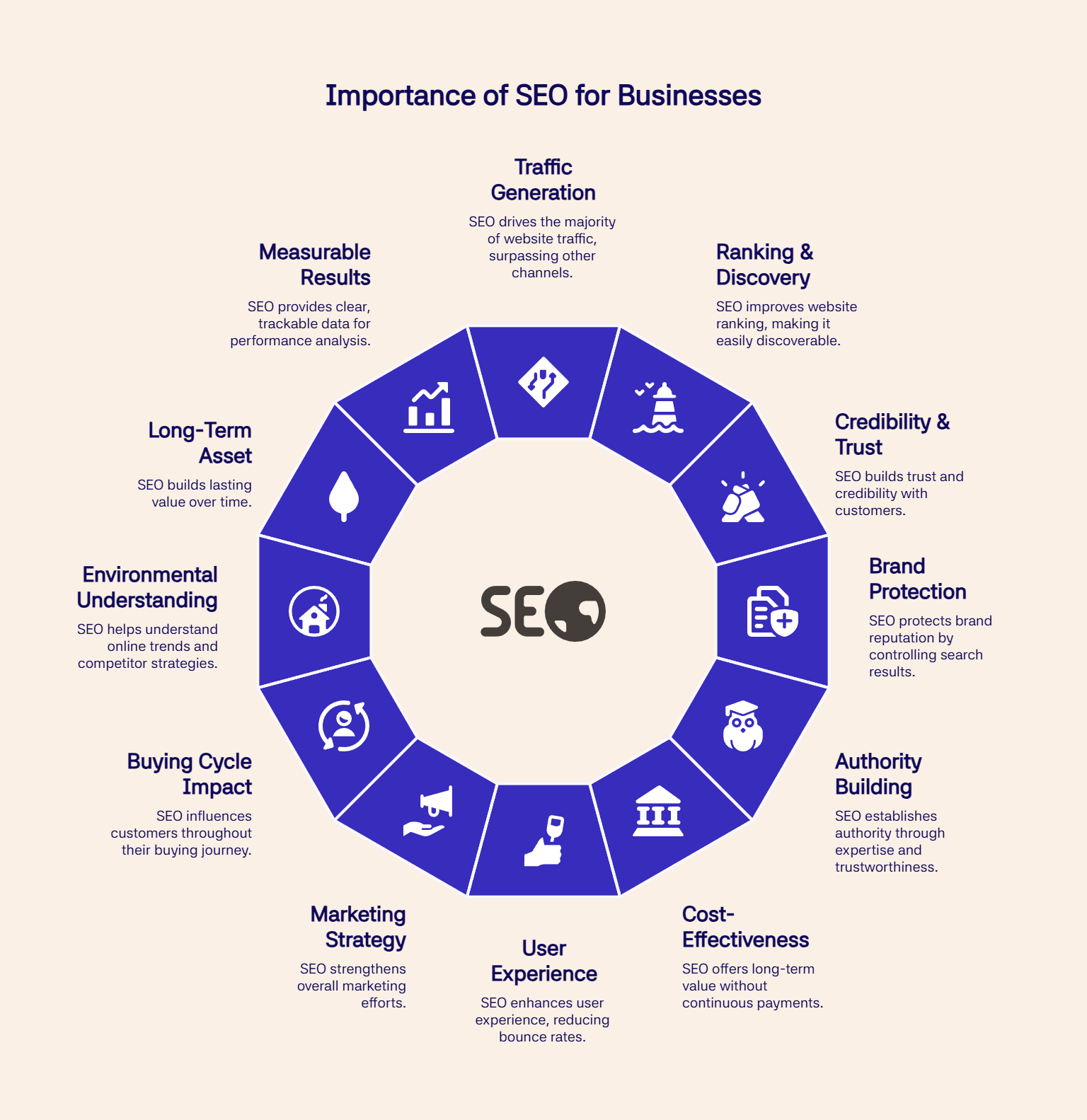
Here are the 12 proven reasons why businesses that prioritize SEO consistently outperform their competitors:
1. SEO drives the Majority of Website Traffic
Organic search delivers 51% of all website traffic; more than social media (5%), paid ads, and direct visits combined. 43% of users click organic results, giving SEO the biggest slice of available traffic.
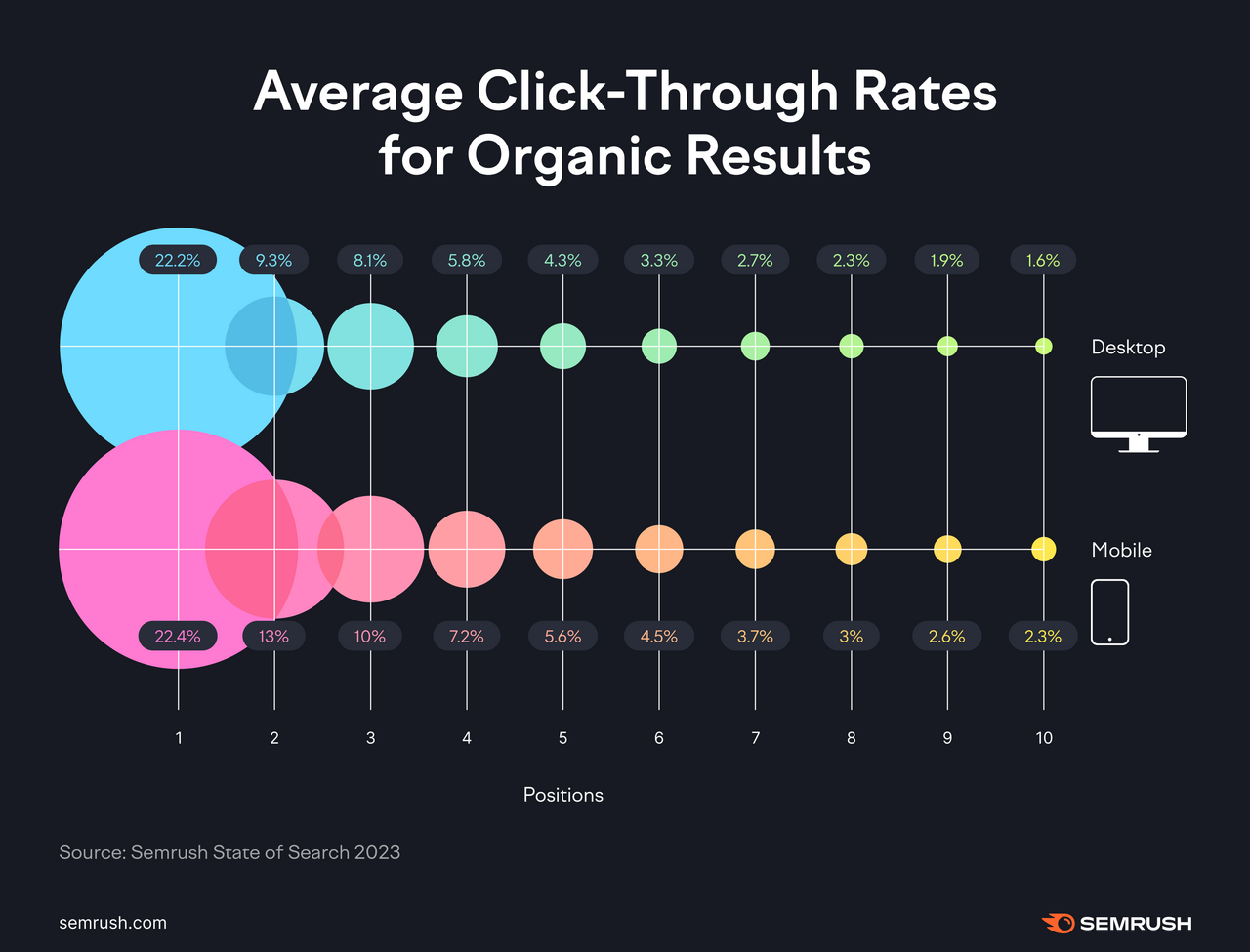
Following SEO best practices captures these clicks consistently without paying per visitor. Your competitors will gladly take those customers if you miss out on search visibility.
2. SEO Helps Your Website Rank Higher and Get Discovered Easily
SEO generates 40% of business revenue from high-intent traffic. Online stores achieve 317% ROI from their search efforts, while businesses average 300% ROI from their SEO campaigns.
SEO captures customers when they're ready to buy, making every click more valuable than interruption marketing.
3. SEO Builds Credibility and Trust With Customers
Top Google rankings signal credibility to customers. 68% of consumers trust organic search results over paid advertisements because Google ranks them based on quality and relevance, not payment.
Top-ranking businesses are perceived as industry leaders, generating higher conversion rates and stronger customer loyalty.
4. SEO Helps You Protect Your Brand
SEO controls what appears when people search your brand name. Without SEO, negative reviews, incorrect listings, or competitor content could rank higher than your official website.
Google Search Console, one of the best free SEO tools, lets you monitor and optimize your brand's search presence to ensure customers find accurate, positive information first.
5. SEO Builds Trust & Authority
SEO establishes your website as a trusted industry authority. Google evaluates sites based on expertise, experience, authoritativeness, and trustworthiness (E-E-A-T). Quality content and backlinks from reputable sites increase your website's authority scores.
Higher authority means better rankings and increased customer confidence in your brand.
6. SEO Delivers Cost-Effective Results
SEO offers long-term value without paying for each click. Once you achieve high rankings, maintenance costs remain low compared to paid advertising. Your initial investment compounds over time.
Morningside Acupuncture grew organic traffic by 2,900% over three years through consistent SEO efforts, demonstrating its cost-effectiveness.

Similar business success stories show how choosing the right website platform and SEO strategy can transform small businesses into industry leaders.
7. SEO Improves User Experience
SEO optimization makes your site faster, mobile-friendly, and easier to navigate. Pages loading under 3 seconds reduce bounce rates and keep visitors engaged.
Modern website builders with integrated AI capabilities can automatically optimize these technical elements during the building process.
Effective SEO includes creating helpful content, fixing broken links, and ensuring smooth customer journeys, leading to more conversions and customer retention.
8. SEO Strengthens Marketing Strategy
SEO amplifies your other marketing efforts. When someone sees your billboard or social media ad, they often Google your business to learn more. Without search visibility, you lose that customer.
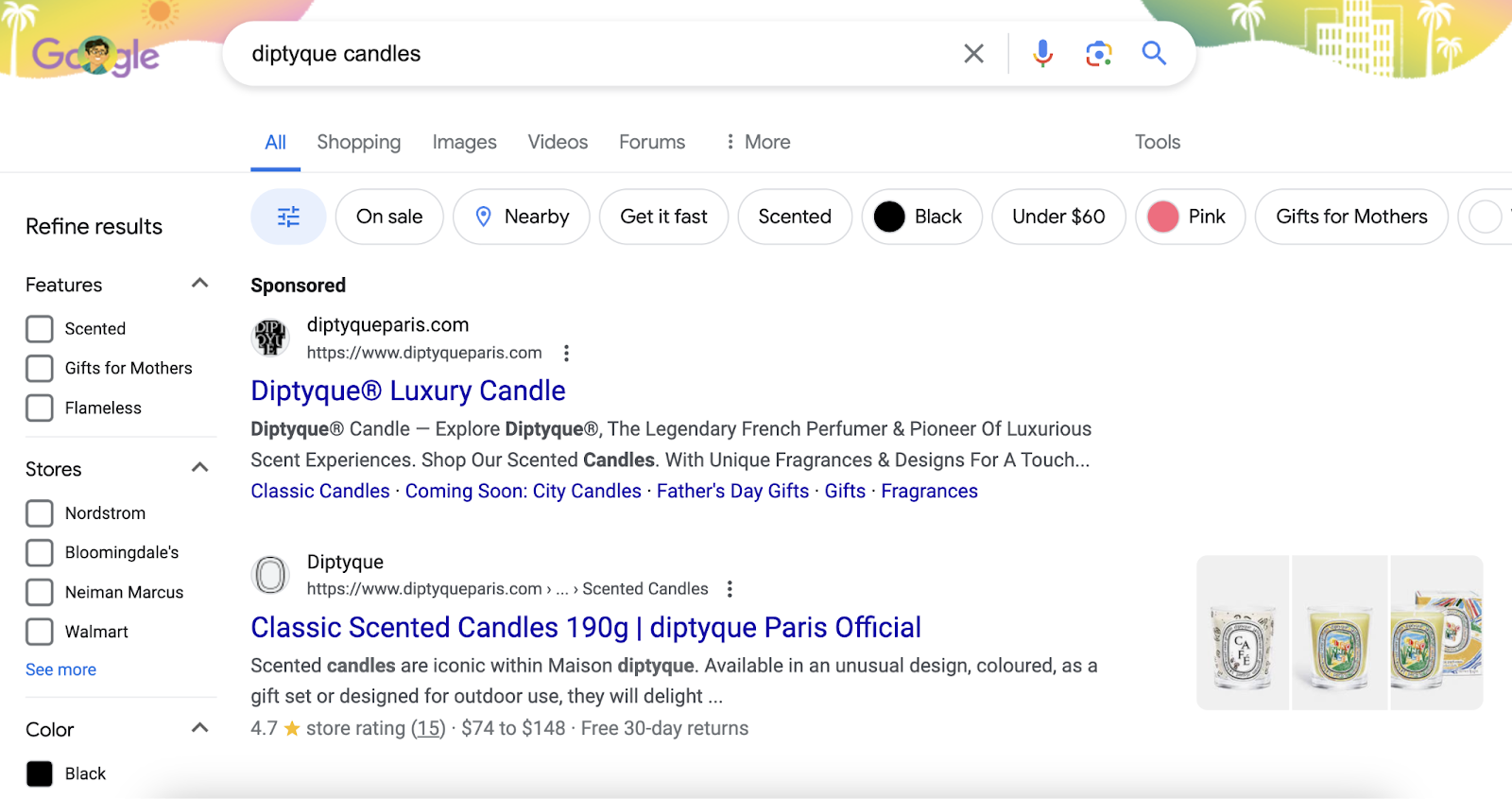
As you can see, Diptyque in the image above, appearing in both sponsored and organic results, doubles the visibility and increases clicks.
9. SEO Impacts The Buying Cycle
SEO connects your business with customers throughout their buying journey. 90% of B2B researchers use search to research purchases, and 80% of shoppers research online before buying.
67% of the buyer's journey is digital, making SEO crucial for reaching people during research phases. Content optimized for different buying stages keeps you visible throughout their decision-making process, building familiarity so your brand becomes the obvious choice.
10. SEO Helps You Understand The Environment Of The Web
SEO keeps you informed about online trends and competitor performance. Tracking search trends, algorithm updates, and competitor strategies helps you adapt to changes impacting your business.
For example, when ChatGPT launched, SaaS companies quickly optimized for "AI-powered" keywords while competitors missed the trend. Monitoring SEO performance reveals which content resonates with your audience, enabling smarter marketing decisions and faster adaptation to new opportunities.
11. SEO Is A Long-Term Asset
SEO builds lasting value over time. While you can see improvements within the first year, real benefits compound with consistency. Even basic Google AI SEO tips and simple optimization make a difference with consistency.
Unlike paid ads that stop when you stop paying, SEO delivers ongoing results.
The more effort you invest, the stronger your website becomes in search results.
12. SEO Provides Measurable Results
SEO provides clear, trackable data through tools like Google Analytics and Search Console. You can monitor keyword rankings, organic traffic, conversion rates, and user behavior to track performance improvements over time..
These show which pages perform best, traffic sources, and search visibility improvements over time.
When investing in SEO services, proof of ROI is essential. The data tells the complete story of SEO success.
What Happens to Businesses Without SEO?
When you ignore SEO, your business becomes practically invisible online. While competitors appear in search results where customers actively look, you miss critical opportunities.
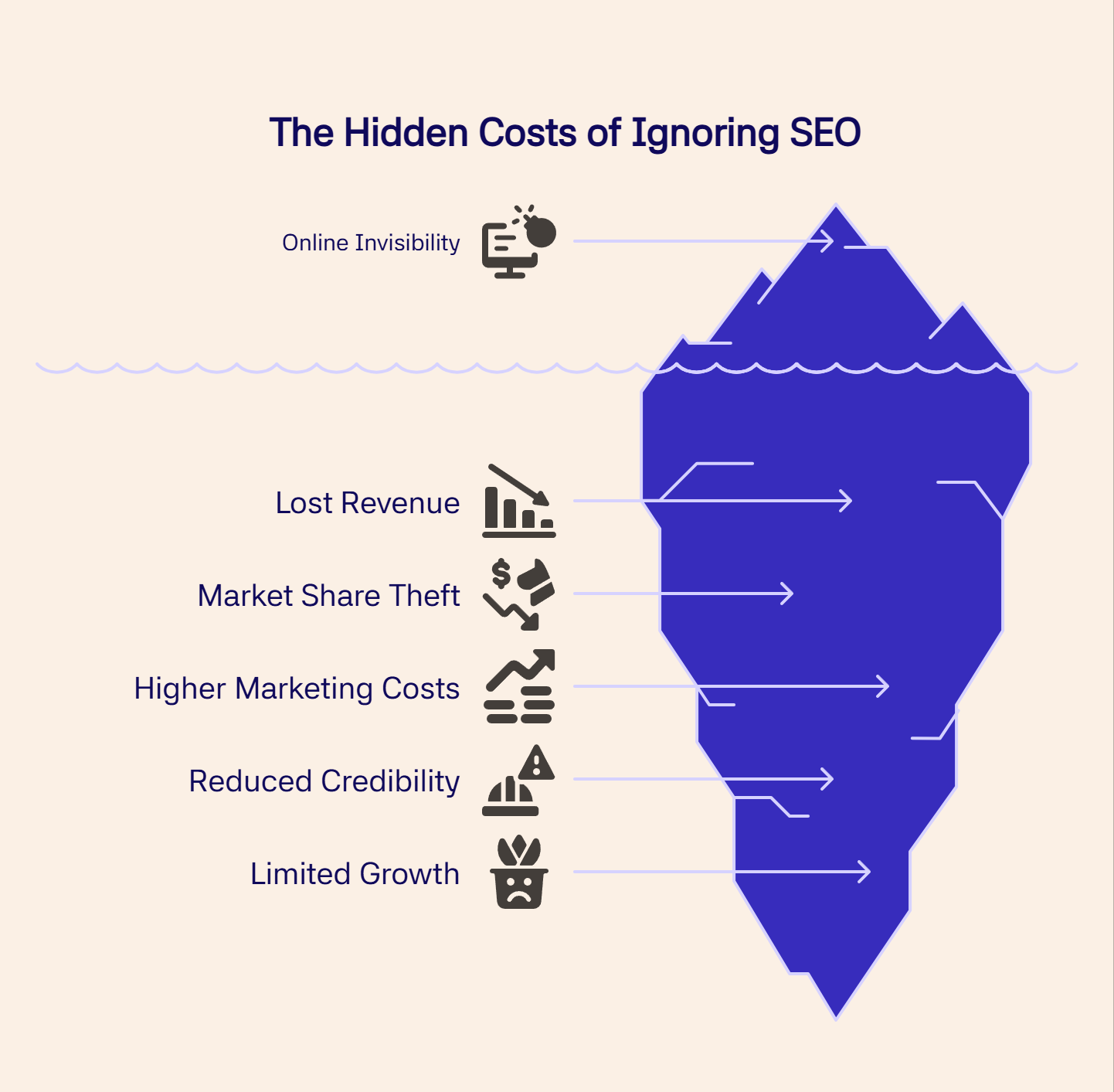
Cost for Businesses Without SEO:
-
Invisible to Most Customers: 75% of users never scroll past the first page of search results, and 93% of buying experiences start with search engines. Without SEO, you're invisible to 75% of potential customers.
-
Lost Revenue: Small businesses miss out on revenue when they don't improve their SEO presence. Competitors capture customers searching for your services while you wonder why leads aren't coming.
-
Market Share Theft: Competitors who consistently invest in SEO efforts often outperform websites that don’t, gaining more trust and stealing your potential customers.
-
Higher Marketing Costs: Without organic traffic, you rely on paid advertising, which is much more expensive and yields lower ROI.
-
Reduced Credibility: 95% of websites don't make it to the top 10 search results within a year if they skip SEO, making authority establishment nearly impossible.
-
Limited Growth: Without SEO, you're stuck with word-of-mouth and expensive advertising that stops working when you stop paying.
Only 49% of small businesses invest in SEO, while 18% say they never will. This creates massive competitive advantages for businesses that invest in SEO.
How Do Competitors Gain Advantages Over Businesses Without SEO?
Competitors with SEO capture 400-500% more traffic within 6 months by ranking for hundreds of keywords, while non-SEO businesses remain invisible in search.
They intercept customers at buying moments, build authority through backlinks, and dominate both informational and transactional searches.
The table below shows how DesktopReady's organic presence compares with a typical B2B SaaS without SEO.
| Metric | DesktopReady (With SEO) | Typical B2B SaaS Without SEO |
|---|---|---|
| Month 0 | ~100 baseline users, 2-3 leads, 0 ranked keywords, 0 backlinks. | ~100 baseline users, 2-3 leads, 0 ranked keywords, 0 backlinks. |
| Month 6 | 509 users (409% increase), 15-20 leads, 468 ranked keywords, 1,340+ backlinks. | 85-90 users, 2-3 leads, <20 ranked keywords, <150 backlinks. |
| Month 12 | 800-1,000 users, 35-45 leads, 600+ ranked keywords, multiple Page 1 positions. | 75-80 users, 2-3 leads, <30 ranked keywords, buried beyond Page 3. |
| Month 24 | 1,500-2,000 users (projected), 80-100+ leads, industry leader presence in market, 5-10X baseline revenue. | 50-60 users, 1-2 leads, invisible in search, declining/stagnating revenue. |
Why These Gaps Widen Over Time:
SEO creates a compounding effect where improved rankings lead to more backlinks and authority, which further boost rankings in a "snowball effect."
While businesses without SEO experience decline in visibility, competitors who invest in SEO dominate search results.
Technical SEO issues from website launches can tank traffic, and without ongoing optimization, these businesses fall further behind as search algorithms evolve and competitors strengthen their positions.
How to Get Started with SEO for Your Business
SEO success begins with understanding your current position and taking systematic steps toward improvement. Most businesses can start seeing results within 3-6 months by following proven fundamentals and maintaining consistency.
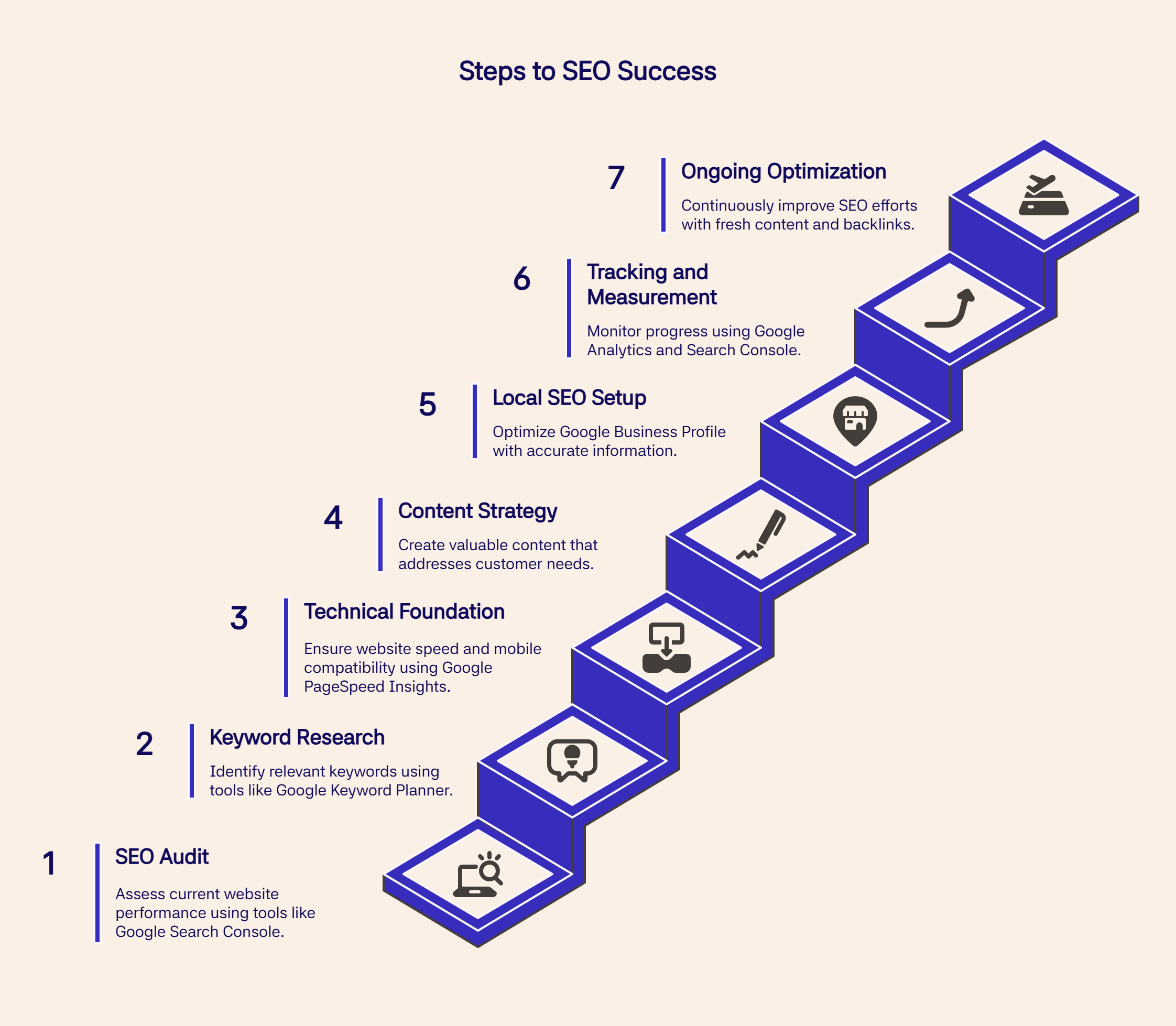
Here's how to implement SEO in your business:
-
SEO Audit and Assessment - Use free tools like Google Search Console to understand how your website currently performs. Check which pages get traffic, identify technical errors, and see what keywords already bring visitors.
-
Keyword Research - Identify what your customers actually search for using tools like Google Keyword Planner, Ubersuggest, or AnswerThePublic. Focus on terms your target audience uses, not industry jargon.
-
Technical Foundation - Ensure your website loads quickly, works on mobile devices, and has clear navigation. Use Google PageSpeed Insights to identify speed issues and fix broken links.
-
Content Strategy - Create valuable content that answers customer questions at each stage of their buying journey. Address common problems, provide solutions, and demonstrate expertise through helpful guides. Blogging is one of the most effective SEO strategies. Businesses that consistently publish blogs generate 67% more leads than those that don't. Integrated blogging platforms make it easier to publish SEO-optimized content regularly without managing separate systems.
-
Local SEO Setup - Claim and optimize your Google Business Profile with accurate information, photos, and regular updates. Ensure your name, address, and phone number are consistent across all online listings. Website builders that integrate with Google Business Profile help maintain consistency between your online presence and local search listings.
-
Tracking and Measurement - Install Google Analytics and Google Search Console to monitor progress. Track organic traffic, keyword rankings, and conversion rates to measure success.
-
Ongoing Optimization - SEO requires continuous improvement. Regularly publish fresh content, update existing pages, and build relationships for quality backlinks.
Free tools provide excellent starting points: Google Search Console for performance monitoring, Google Analytics for traffic analysis, and Google Business Profile for local visibility.
Paid tools like SEMrush or Ahrefs offer advanced features, but aren't essential initially.
How Long Does SEO Take to Work and Why the Timeline Matters?
SEO takes 6–12 months to show significant results, though initial improvements appear within 1–3 months. Timelines depend on factors like website age, competition, and content quality.
The timeline matters because it prevents premature panic, enables smarter budget planning, and supports realistic long-term business goals.
Here's what the SEO journey typically looks like:
| Timeframe | Expected Results | Key Factors |
|---|---|---|
| 1-3 months | Initial indexing, easy keywords | New content, technical fixes |
| 4-6 months | Noticeable traffic increases | Consistent content, link building |
| 6-12 months | Significant organic growth | Authority building, topic coverage |
| 12+ months | Market dominance, compound growth | Established authority, competitive advantages |
What Factors Determine SEO Timeline?
There are thousands of factors that determine the SEO timeline, but here are the nine most critical factors:
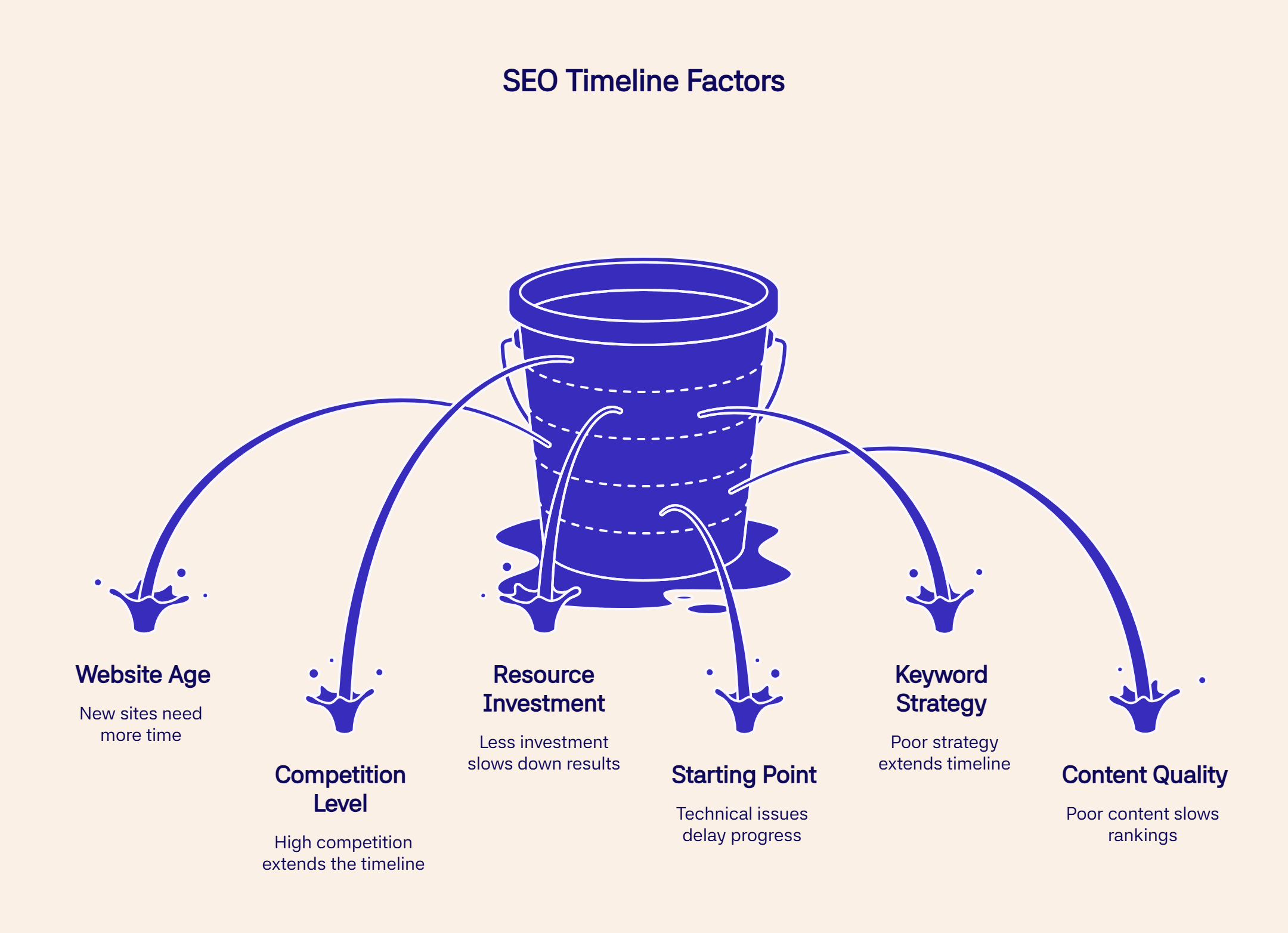
-
Website Age: New websites need more time to build trust with Google. Established sites with existing authority can see faster improvements.
-
Competition Level: Ranking for "CRM software" takes longer because it’s highly competitive (Keyword Difficulty or KD 70+), while "employee scheduling app for restaurants" has lower competition (KD 20–30) and is easier to rank for.
-
Resource Investment: More content, better optimization, and stronger link building accelerate results.
-
Starting Point: Sites with major technical issues need fixing before seeing growth.
-
Keyword Strategy and Difficulty: Targeting long-tail keywords can lead to faster rankings, while high-volume, competitive keywords will extend the timeline.
-
Quality and Volume of Content: Well-researched, helpful content and frequent updates boost rankings and signal relevance.
-
Backlink Profile and Link Building: A strong backlink profile and ethical link-building efforts increase authority and speed up growth.
-
Technical SEO and Website Health: Fixing issues like slow speed and poor mobile experience, and meeting Core Web Vitals helps search engines crawl and rank your site.
-
Search Engine Algorithm Updates: Algorithm changes can affect rankings, so adapting to updates is key for ongoing progress.
Why Does the Timeline Matter for Your Business?
Understanding SEO timelines prevents three critical business mistakes:
-
Avoiding Premature Panic: Many businesses quit SEO after 2-3 months, right before results typically appear.
-
Smart Budget Allocation: Knowing SEO takes time helps you plan resources accordingly rather than expecting immediate ROI.
-
Realistic Goal Setting: You can set milestone expectations that actually make sense, keeping your team motivated and focused.
Timeline Comparison: SEO vs Other Channels
| Timeframe | SEO | PPC Ads / Other Paid Channels |
|---|---|---|
| Immediately (Day 0 – Week 1) | Little to no traffic, groundwork being laid (optimization, content planning) | Fast traffic boost as soon as campaigns go live |
| 1–3 months | Initial improvements in rankings and visibility for less competitive keywords | Traffic continues as long as the budget is active; leads start coming in |
| 3–6 months | Steady traffic growth, better rankings, and early leads from organic search | Requires consistent spend; traffic stops when the budget stops |
| 6–12 months | Compounding results, stronger rankings, and ongoing qualified leads | Traffic fluctuates with spend, and no long-term asset is built |
| 12+ months | Sustainable, long-term traffic and brand authority, leads keep coming without extra spend | High ongoing cost, traffic disappears once spending stops |
Why Does SEO Require Patience and Long-Term Thinking?
SEO demands sustained effort over months, not quick wins. Businesses expecting immediate results often abandon strategies before seeing compound benefits that typically appear after 6-12 months.
Each SEO investment builds on previous work. Quality content supports other content, backlinks strengthen entire domains, and authority accumulates exponentially rather than linearly.
Patient businesses create advantages that competitors cannot easily replicate. This is why many successful companies work with agencies that understand long-term SEO strategy. Professional agencies and consultants often recommend SEO-friendly website building platforms that support sustainable growth rather than quick fixes.
Established domain authority, comprehensive content libraries, and strong backlink profiles become barriers that protect market position.
An immediate gratification mindset treats SEO as a monthly expense rather than an asset-building investment. This psychology leads to premature abandonment when businesses should be doubling down during foundation-building phases.
Most companies lack patience for long-term SEO, creating opportunities for disciplined businesses willing to invest consistently while competitors chase quick fixes.
The Cost-Effectiveness of SEO Compared to Other Marketing
SEO delivers $19.90 ROI per dollar spent versus PPC's $4.40 ROI.
Let's break down what different marketing strategies actually cost over time. For a $100,000 annual digital marketing budget, SEO can generate approximately $51,724 in revenue compared to $23,275 from PPC, showing SEO delivers over twice the revenue from the same investment.
But the gap gets even wider over multiple years.
Here's what typical investments in different marketing channels look like in three years:
| Strategy | Year 1 Cost | Year 3 Total Cost | Ongoing Requirements | ROI Potential |
|---|---|---|---|---|
| SEO | $12,000-48,000 | $36,000-144,000 | Content, maintenance | 500% minimum ROI |
| PPC | $24,000-120,000 | $72,000-360,000 | Continuous ad spend | 200% average ROI |
| Social Media | $8,000-40,000 | $24,000-120,000 | Content, management | Variable |
Calculating the True ROI of SEO Investment
The basic formula of calculating SEO ROI is: (Revenue from SEO - Cost of SEO) ÷ Cost of SEO × 100.
For example, if you spend $10,000 on SEO annually and it generates $50,000 in revenue, your ROI is 400%.
Here's the math: ($50,000 - $10,000) ÷ $10,000 × 100 = 400%.
But true SEO ROI goes deeper than one-time sales. You need to factor in customer lifetime value — the total amount a customer will spend with your business over time.
If your SEO brings in customers worth $5,000 each over three years instead of just $500 per purchase, your real ROI jumps dramatically.
Track organic traffic, conversion rates, and long-term customer value to get the complete picture of your SEO investment's true worth.
How Does SEO Build Long-Term Business Assets?
SEO builds long-term business assets by creating sustainable online visibility, organic traffic, and brand authority. Optimized content ranks consistently and generates leads without ongoing ad spend.
High-quality backlinks, improved site architecture, and keyword equity increase a website’s long-term value, making SEO a compounding business investment.
Types of SEO Assets
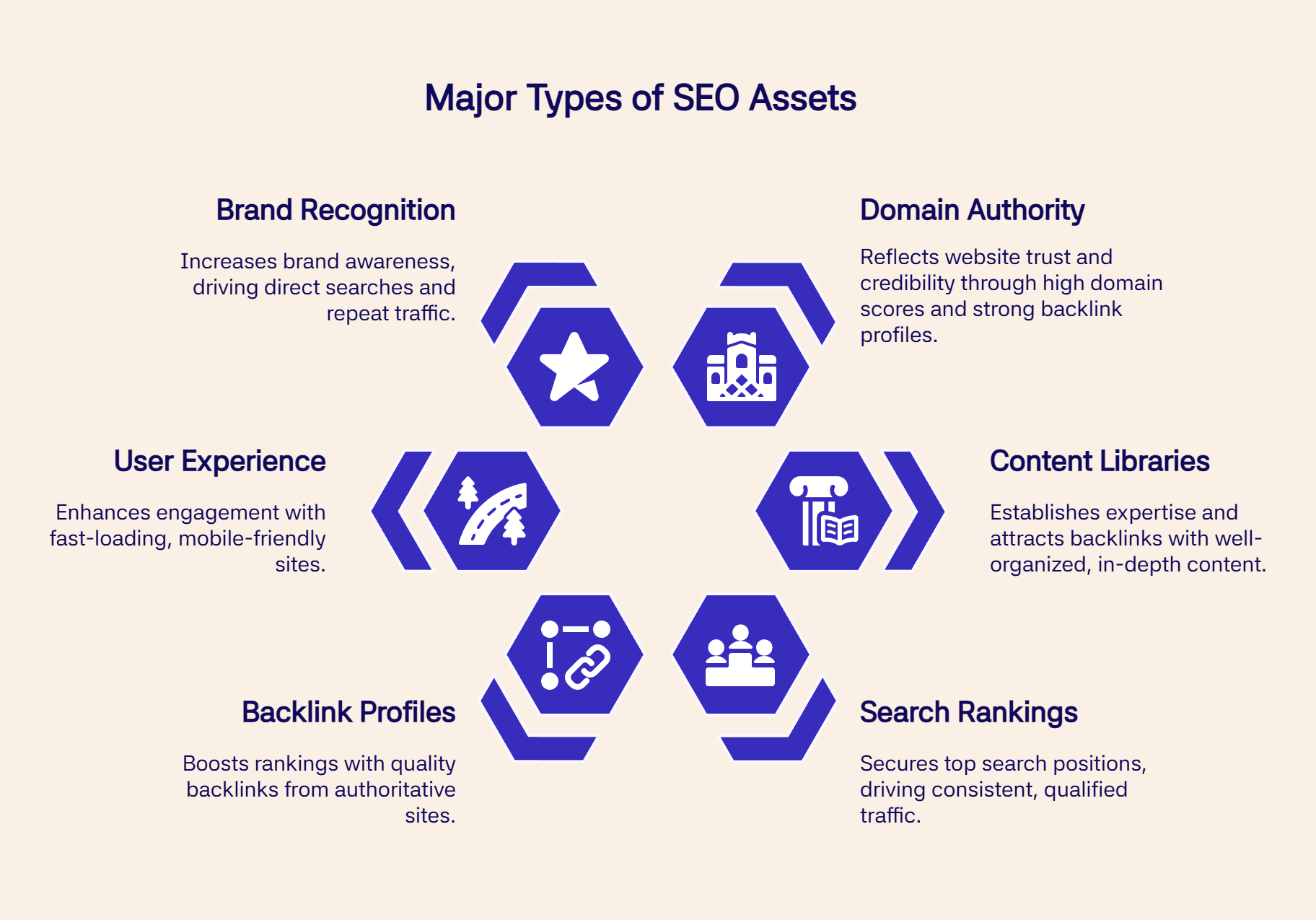
-
Domain Authority and Trust Signals: A high domain score (60+) reflects a trusted website with a strong backlink profile and proven credibility in its niche.
-
Content Libraries and Topical Authority: Well-organized, in-depth content collections establish expertise and attract backlinks, driving sustained traffic and improving relevance.
-
Search Rankings and Organic Visibility: Top search positions act as valuable digital property, consistently bringing in qualified traffic without ongoing advertising spend.
-
Backlink Profiles and Referral Networks: Quality backlinks from authoritative sites boost rankings and serve as trusted endorsements, strengthening your site's presence in search results.
-
User Experience Improvements: Fast-loading, mobile-friendly sites with intuitive navigation keep visitors engaged and boost search rankings
-
Brand Recognition and Search Brand Queries: Strong SEO efforts increase brand awareness, driving direct searches and repeat traffic from users familiar with your business
Why Do SEO Assets Appreciate While Advertising Depreciates?
SEO builds appreciating assets while advertising creates depreciating expenses. Content gains authority, backlinks strengthen domains, and rankings improve over time, creating exponential value growth.
Spending $1,000 monthly on ads for five years equals $60,000 with zero remaining assets. The same investment in SEO creates content libraries, domain authority, and rankings, generating traffic indefinitely.
Businesses with five-year SEO strategies develop advantages that competitors cannot easily replicate. HubSpot's decade-long content strategy generates millions of monthly organic visitors, reducing dependence on paid acquisition while competitors pay increasing advertising costs.
SEO's Role in Modern Customer Behavior and Buying Journeys
Modern customers research extensively before purchasing. 81% of reps say customers research on their own before reaching out to sales. Most B2B buyers review 11 pieces of content, and 72% begin their search online. 67% of the buyer's journey takes place online.
Buyer Journey Stages
-
Awareness: 71% of B2B decision-makers start research with Google searches. SEO captures problem-focused queries like "reduce employee turnover."
-
Consideration: 74% use search engines for consideration research. SEO content addresses comparison searches and solution guides, such as “best employee retention strategies” or “how to improve workplace engagement.”
-
Decision: Nearly 8 in 10 buyers finalize requirements before contacting vendors. SEO ensures visibility for brand-specific and comparison searches like “top HR software for retention” or “employee turnover solutions provider.”
-
Post-Purchase: SEO supports customer success through help documentation and implementation guides, building loyalty and generating reviews.
Search presence builds credibility throughout the entire buyer journey.
49% of consumers rely on search for purchase decisions, with 19% identifying search engines as most influential. Over four-fifths of B2B decision-makers trust organic results over paid ads.
How Mobile Search Behavior Changes SEO Importance
Mobile search has made SEO more important than ever. With 57% of local searches done on mobile and Google using mobile-first indexing, sites need to prioritize mobile optimization to rank well.
Voice and “near me” searches are on the rise — 76% of voice queries are local, and “can I buy near me” searches have grown by over 500%. Optimizing for conversational keywords and featured snippets is essential.
Without mobile-friendly sites, businesses miss up to 76% of nearby customers who act within a day. Mobile SEO is no longer optional — it’s critical for local visibility and growth.
The Role of Search in Local Business Discovery
Local discovery now happens primarily through search. "Near me" searches have surged 200%, with 42% of local searches clicking into the local pack.
Businesses with Google Business Profiles are 2.7x more trusted, while the #1 local pack result receives 17.8% of clicks.
72% of local searchers visit stores within five miles, converting search visibility directly into foot traffic. Local SEO extends a broader strategy by targeting location-specific keywords for immediate-intent mobile users.
Common SEO Myths and Misconceptions That Hurt Businesses
Many businesses believe outdated SEO myths that waste money and prevent real growth. Here are five dangerous misconceptions that damage SEO success:
1. Domain Age Is A Ranking Factor
Google has repeatedly debunked this myth. In 2019, John Mueller stated, "domain age helps nothing." Older websites often rank better because they've had more time to build quality backlinks and authority, not because of their age.

A 10-year-old website with strong content and links will outrank a 6-month-old site, but correlation doesn't equal causation.
Focus on building quality rather than waiting for time to pass.
2. Google Uses Google Analytics Data In Rankings
Google officials have repeatedly debunked this myth. John Mueller stated, "We don't use anything from Google Analytics in the algo."
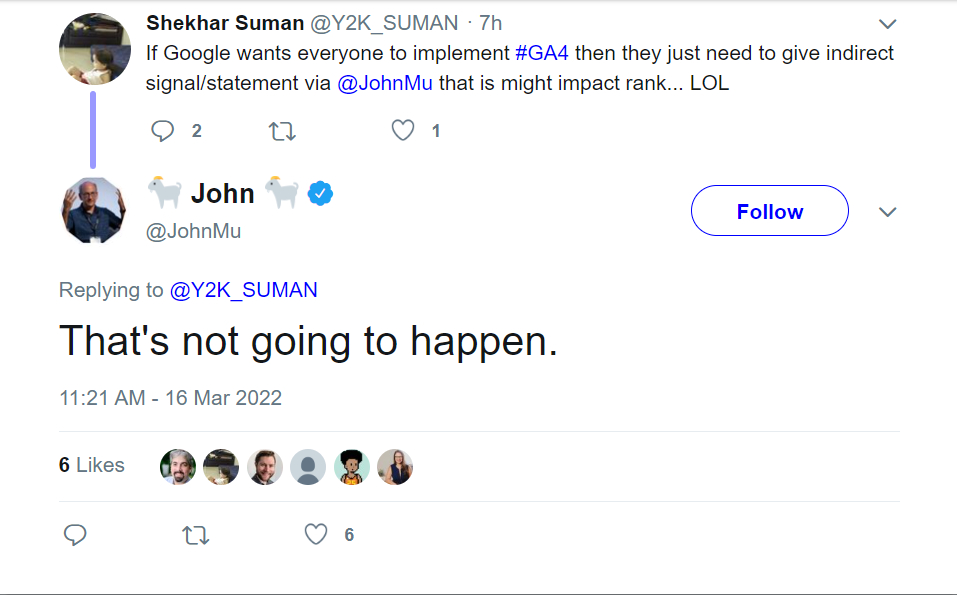
Gary Illyes confirmed Google doesn't use Analytics data for rankings. Using this data would be impractical. Businesses could manipulate filters; different sites have varying configurations, and many websites use other analytics platforms entirely.
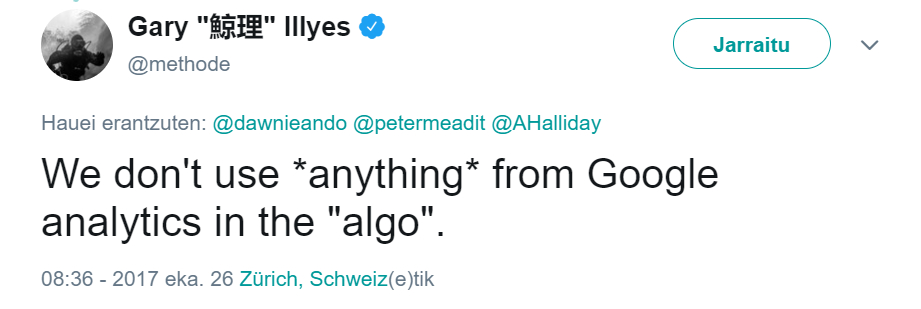
3. Google Cares About Domain Authority
Google doesn't use third-party "Domain Authority" metrics like Moz's DA, Ahrefs' DR, or Majestic's scores. John Mueller clarified in 2022: "We don't use domain authority. We generally try to have our metrics as granular as possible."
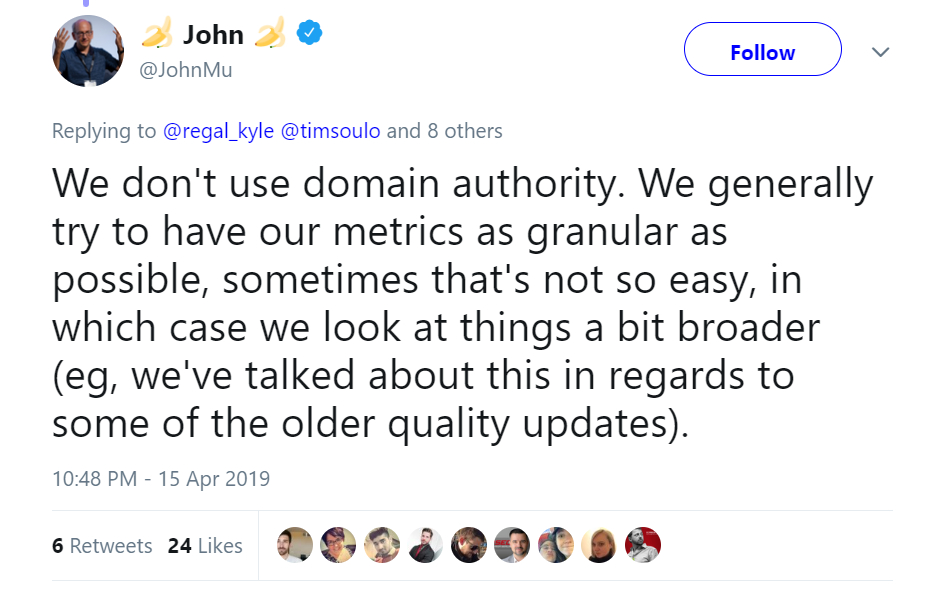
These tools create their own authority scores to estimate ranking potential, but Google evaluates pages individually using hundreds of different signals, not a single domain-wide authority score.
4. Longer Content Is Better
Word count alone doesn't determine rankings. Studies showing top-ranking pages average 1,450+ words reflect correlation, not causation.
John Mueller clarified in 2021: "The number of words on a page is not a quality factor, not a ranking factor."
Longer content often ranks well because it comprehensively covers topics, but adding fluff words won't improve rankings.
Focus on thoroughly answering user questions rather than hitting arbitrary word counts.
5. LSI Keywords Will Help You Rank
"LSI keywords" is a misunderstood concept in SEO. Latent Semantic Indexing is a real technical process for analyzing text relationships, but the SEO community incorrectly treats it as using synonyms to boost rankings.
Google's algorithms have evolved far beyond LSI with technologies like BERT. Simply adding thematically related words won't improve rankings.
Focus on naturally covering topics comprehensively rather than forcing keyword variations based on outdated LSI theories.
Frequently Asked Questions
How much should a small business invest in SEO?
Small businesses often spend $1,000–4,000 monthly or 5–10 hours weekly on SEO. Start with basics like site fixes and content, then scale as results come in. Many see positive ROI in 6–12 months.
Can SEO work for local service businesses?
Yes! Local SEO is powerful. Optimize your Google Business Profile, create city-specific content, and collect reviews. Many service businesses reach first-page results in 3–6 months for “near me” searches.
Is SEO worth it if my business is already successful?
Definitely, without SEO, you risk losing visibility to competitors who invest in it. SEO secures long-term growth, lowers reliance on ads or referrals, and builds digital assets that keep delivering customers.
How do I know if my SEO is working?
Check Google Analytics and Search Console for organic traffic, keyword ranks, and conversions. Early signs include more impressions and branded searches, with stronger results after 6–12 months.
What's the biggest mistake businesses make with SEO?
Expecting fast wins and quitting early. SEO usually shows results after 4–12 months. Another mistake is treating it as a one-time fix instead of an ongoing process of content, updates, and optimization.
Can AI and automation replace traditional SEO strategies?
No. AI helps with research, content, and audits, but human expertise is vital for strategy, intent, and quality. The best results come from blending AI tools with human-driven SEO knowledge.


